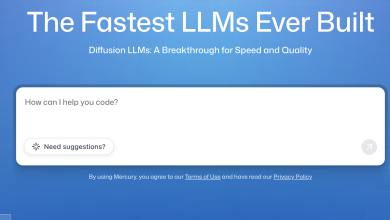
Yining (Iris) Liu has built her career around one central idea: intelligence should sharpen human judgment, not replace it. As a data and analytics leader working at the intersection of technology, AI, and e-commerce, Liu currently heads analytics, infrastructure, and AI innovation at Jack Archer. There, she translates complex data into actionable strategy, helping scale brands from inception to growth while ensuring every system serves clarity and intent.
Her path through fintech, SaaS, and e-commerce has been defined by the same principle—building intelligent systems that make people think better, not less. At Chime Financial, she led experimentation and GenAI automation to improve the customer experience and operational efficiency. At OpenStore, she turned an internal analytics project into a SaaS platform that reimagined AI-driven customer support. Across each role, her work blends empathy, architecture, and innovation to ensure automation amplifies creativity rather than replaces it.
In this conversation with AI Journal, Liu discusses the philosophy behind human-centered AI, the role of empathy in data architecture, and how automation can become a framework for creativity, collaboration, and sharper decision-making in the age of intelligent systems.
You’ve built analytics and AI systems from the ground up across fintech, SaaS, and e-commerce. How do you approach designing intelligent systems that enhance human judgment rather than replace it?
My guiding principle is simple: intelligence starts with understanding, not automation. At Jack Archer, before I design any system, I spend time unpacking why a problem exists, what outcome we are trying to achieve, what constraints shape it, and what the implications are if we get it wrong. That level of context and reasoning is something AI still cannot replicate.
Once the real problem is clear, I design automation around human intent, not the other way around. The system handles repetitive tasks such as data cleaning, forecasting, and anomaly detection so that people can focus on the strategic and creative reasoning that drive results. The goal is not to make humans obsolete but to make their judgment sharper. AI can surface patterns, but only people can interpret what those patterns mean for the business, what trade-offs to make, and where to take calculated risks. The best systems create that connection between insight and action so that impact becomes intentional, not incidental.
In your experience leading data and AI initiatives at companies like Jack Archer and Chime, what are some of the most potent examples of automation creating more space for human creativity and collaboration?
At Jack Archer, much of my work focuses on building automation that improves clarity and business outcomes. We rebuilt our analytics foundation to streamline insights across marketing, product, and operations, automating data cleaning, anomaly detection, and goal tracking. This allowed teams to spend less time reconciling data and more time asking creative questions about growth strategy, customer experience, and long-term impact.
During my time at OpenStore, we carried the same principle into customer support through OpenDesk, our SaaS initiative. By automating ticket classification and insight generation, we improved operational efficiency while freeing support leads to focus on empathy, tone, and service recovery. The impact went beyond cost savings. It changed how teams thought about quality and human connection.
Within the Jack Archer brand itself, we extended this philosophy into the storefront. We rebuilt our entire performance reporting system so data from every channel flowed in real time. This transformed reporting from a reactive task into a proactive business lever. Teams stopped debating accuracy and began collaborating on why certain changes happened and what to do next. Automation became a framework for deeper human creativity and better commercial decisions.
Many leaders see AI as a tool for optimization, but you’ve often spoken about designing systems that also reflect empathy and intuition. How do you bring that human dimension into data architecture and decision-making frameworks?
I see empathy as a design principle, not a soft skill. When I build data architecture, I start with a simple question: Will this make sense to someone who wasn’t in the room when we built it? That question ensures the system stays transparent and approachable.
At Jack Archer, we designed our experimentation and diagnostics frameworks to include plain-language explanations alongside metrics so that non-technical stakeholders can understand the story behind the data. This approach bridges the gap between analysis and decision-making. Empathy shows up in the smallest choices: clear variable naming, intuitive visualizations, and messages that guide rather than blame. When analytics are designed this way, people don’t just see numbers; they see meaning. And that clarity enables faster, better-aligned business outcomes.
At Jack Archer, you helped transform an internal analytics project into a SaaS product. What did that experience teach you about how humans and AI can co-create value in real time?
AI’s real strength is not in prediction but in accelerating learning. By surfacing insights faster, it helps teams experiment more intelligently, iterate faster, and make decisions that compound in value over time. That co-creation loop between people and AI is where transformation happens. It turns data from a static resource into a dynamic collaborator that continuously sharpens business performance.
Data can guide, but it can also overwhelm. What strategies do you use to ensure that analytics empower better decisions rather than add complexity or cognitive overload for teams?
Information overload is the enemy of clear thinking. My approach is to make analytics feel like a conversation rather than a confrontation. Every system I build follows three principles: context before complexity, progressive discovery, and narrative framing.
This means the most important signals surface first, details unfold as users explore, and every metric is anchored in why it matters. At Jack Archer, this approach turned dashboards into operational tools that drive daily action. Instead of asking “What happened?” teams now ask “What should we do next?” Simplicity is not about reducing data; it’s about increasing focus. That shift consistently leads to faster decisions, clearer accountability, and measurable business lift.
With AI now embedded across every business function, how can leaders encourage their teams to see automation as a creative partner rather than a technical threat?
Right now, we are leading a complete redesign of our data infrastructure at Jack Archer to improve cost efficiency and operational clarity. But this is not just a technical project; it is about helping people think better. Once I understand a team’s business objectives, I spend time observing their day-to-day workflows to uncover opportunities that no AI could identify alone.
Most of the time, the challenge is not technology but it is translation. Many stakeholders know what they want to achieve but struggle to express it in technical terms. My role is to bridge that gap, turning business context into architecture. Machines can automate processes, but they cannot read between the lines or interpret intent. Human judgment fills that gap, aligning automation with real business impact. The best systems do not replace critical thinking; they amplify it.
You’ve worked in fast-moving startups where ambiguity is constant. How has that environment shaped your philosophy on building data systems that are adaptable, intuitive, and emotionally intelligent?
Startups teach you humility quickly because everything changes. That environment shaped my belief that data systems should expect change rather than resist it.
I build modular and interpretable systems that evolve with the business. But emotional intelligence matters just as much as architecture. When something fails, the system should explain, not accuse. When a metric changes, it should contextualize rather than alarm. The tone of communication shapes trust. The more a system behaves like a calm, clear teammate, the more people rely on it in high-stakes moments. Emotional intelligence in data design is not about sentimentality; it is about resilience and credibility under uncertainty.
Looking ahead, what does the future of human-centered AI design look like to you, and how can organizations build cultures that treat data not just as a resource, but as a relationship between technology and people?
The next generation of AI will feel less mechanical and more relational. We are moving from dashboards to dialogue, from “What happened?” to “What should we do next?” In that world, organizations that thrive will treat data as a relationship rather than a resource.
That means building cultures that pair technical rigor with human curiosity, where teams challenge assumptions, share interpretations, and see AI as an extension of their collective intelligence. Human-centered AI is not about teaching machines to feel. It is about designing technology that helps people feel seen, capable, and confident in their decisions. When that happens, data stops being a report and becomes a relationship that drives growth.



